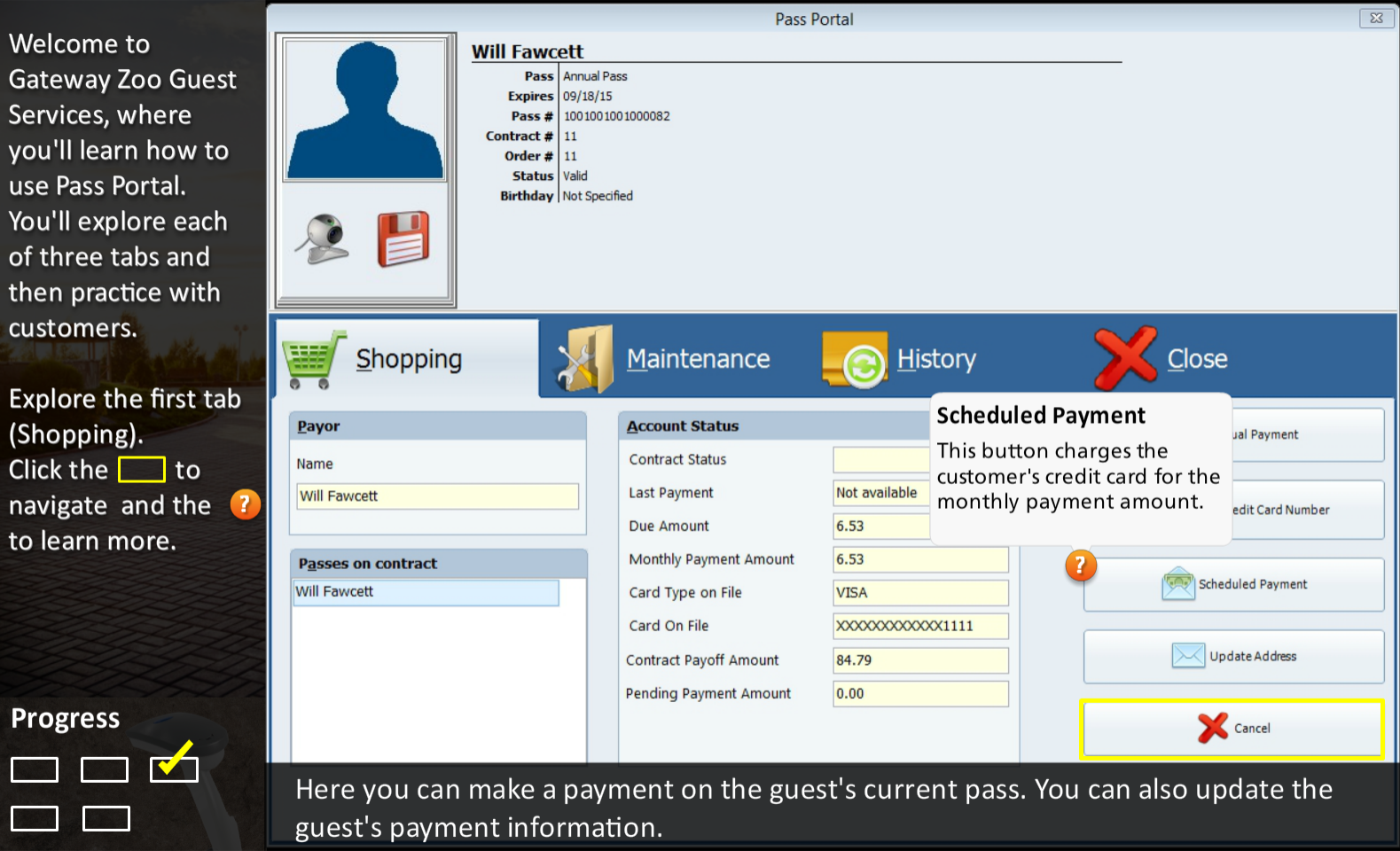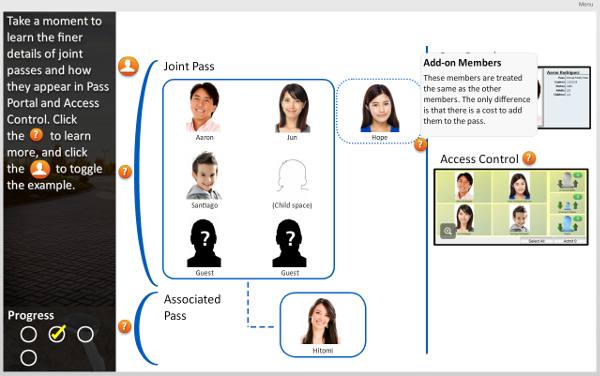PORTFOLIO SAMPLE
Point-of-Sale E-Learning



Challenge
A point-of-sale software development company required a quick, on-demand method of training new cashiers and system administrators. Existing training methods were all instructor-led and required new users to wait up to three months for the next scheduled course. Instead of waiting, users would try to figure out the software on their own, leading to increased traffic on the company’s help desk.
Solution
I used Articulate Storyline to develop separate e-learning formats for cashiers and system administrators.
Top: Papers, Please. Bottom: My similar layout.
For cashiers, it is crucial to perform simple tasks quickly and accurately, so I selected a software simulation format. Each section of the simulation gives a brief overview and demonstration of an area of the software, followed by a series of virtual customers approaching the counter and making requests. Each customer interaction is a Articulate Storyline “scene” with 10-15 slides of software screenshots and hot spots. Selecting the correct button advances the slide, while 3 incorrect selections in a row will spawn an arrow pointing at the answer. At the end of the scene, the learner receives a pink ribbon if they made two or more mistakes; otherwise, they receive a blue ribbon. At any time the learner can pull up a list of achievements to see the ribbons they have earned and return to previous scenes if desired. These achievements are included in the SCORM results sent to the learning management system for the supervisor to review.
To make the simulation more immersive, I drew inspiration from Papers, Please, a popular game that simulates work at a border checkpoint in a war-torn eastern European country. For my simulation, as you might expect, I choose more pleasant themes. Instead of a blaring megaphone, downtrodden immigrants, and a heavy passport stamp, my version has ambient park noises, cheerful attraction guests, and a beeping bar-code scanner.
For system administrators, it is more important to develop a mental schema of how the software works, so that they can customize the configuration effectively for their organization’s needs. In this case, I chose an interactive walk-through format that provides spaced repetition, multiple contexts for the same principles, and the opportunity to pull up additional information as desired. The course begins with a brief skit at an imaginary organization, where two characters present a business need that will be solved later in the course. Next is a concepts section that explains principles behind the software (such as interactions between the central database and individual point-of-sale nodes). Then there is an overview demonstration that explains how to configure the software generally, followed by a scenario demonstration that shows how to configure the software for the specific business need mentioned earlier. Both sections show software screenshots with Articulate Storyline markers for pop-up help. The course finishes with a multiple-choice understanding check and a conclusion to the skit from the beginning.
Result
Four years since their launch, these e-learning courses are now part of the standard training program for the software company’s customers and internal operations department. On follow-up surveys asking whether learners can now do their jobs better, the courses have received an average response between “Agree” and “Strongly Agree.” The courses have also become the backbone of the company’s system administrator Certification Program.
Reflection
As we developed the curriculum, my team and I realized that sometimes e-learning requires a culture shift.
For some customers, an instructor-led class is the default way to train their staff; others want an instructor to answer questions on how to apply the e-learning to their specific needs. In cases like these, my team would typically recommend blended learning. In this approach, the learners would take the e-learning first to get the essentials, before meeting with an instructor for in-depth Q&A. Often, however, few people would take the e-learning, and the instructor would still have to spend class going over the basics.
We found two conditions that affected e-learning adoption. The first was the learners’ manager, who is key in any training effort but especially so when the training is self-directed or appears in a new style. The second is the length of the training engagement. When multiple instructor-led sessions were spread out over weeks, learners often realized the value of reviewing the e-learning first and adjusted their behavior for later sessions.

